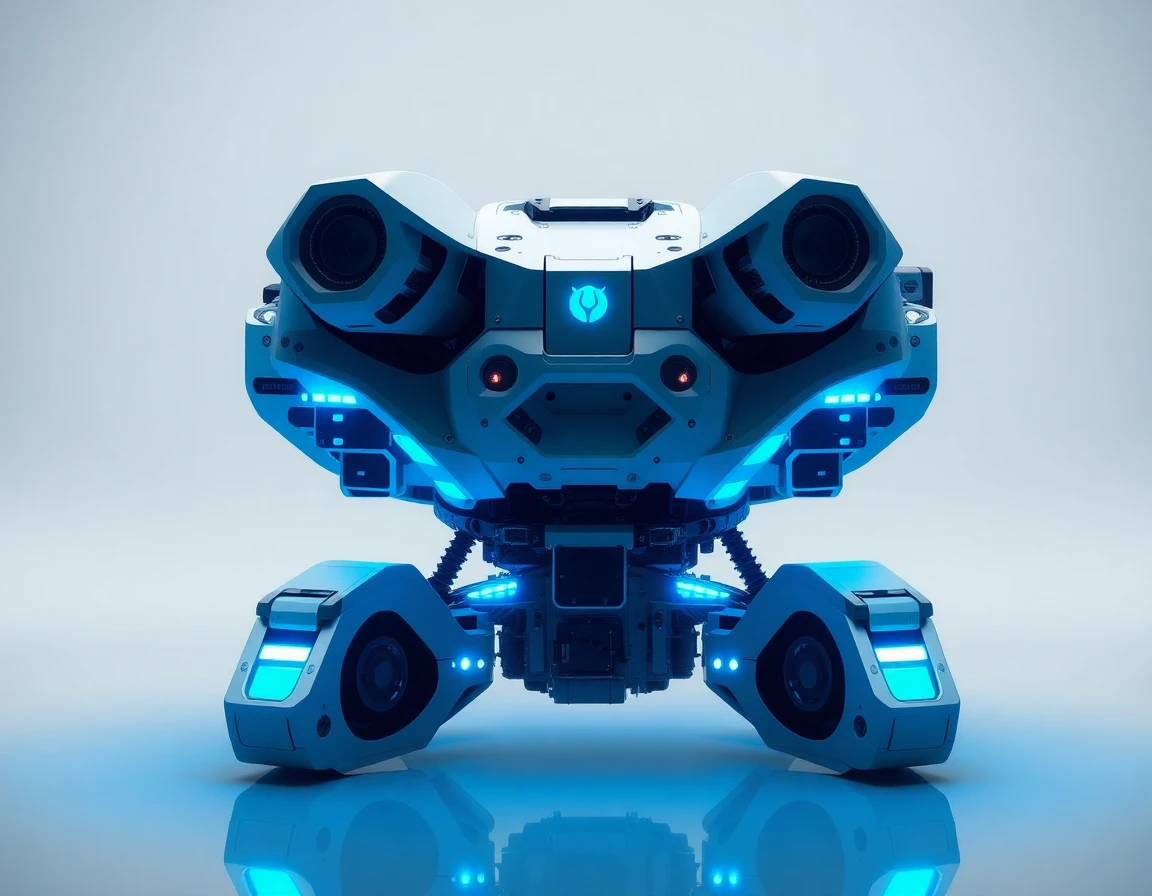Recent innovations in autonomous defense systems have significantly transformed the aerospace and defense sectors, integrating advanced artificial intelligence (AI) technologies into unmanned systems. Notably, the United States, the United Kingdom, and Turkey are at the forefront of these developments, shaping the future of warfare through enhanced unmanned aerial systems (UAS) and human-machine teaming. This article delves into key advancements, strategic collaborations, and the ethical implications of deploying autonomous weapons in modern conflicts.
United States: A Leader in AI-Enabled Unmanned Air Systems
The U.S. maintains its position as the global leader in the development and integration of autonomous defense systems. With substantial investments in research and development, the Department of Defense, particularly through the Defense Advanced Research Projects Agency (DARPA), is pioneering foundational autonomy research. This encompasses essential areas such as navigation, sensing, and adversarial robustness, aimed at enhancing the capabilities of unmanned systems.
One of the most notable programs is the procurement and operational deployment of the Kratos XQ-58 Valkyrie, a loyal wingman designed to operate alongside manned aircraft. This system exemplifies the U.S.’s commitment to swarming technology and manned-unmanned teaming, facilitating a more dynamic and responsive battlefield strategy.
Industry partnerships with major aerospace firms such as Lockheed Martin, Northrop Grumman, and Anduril are accelerating the pace of innovation. These collaborations are critical for developing prototypes that can seamlessly integrate into operational scenarios, ensuring that the U.S. military remains at the cutting edge of autonomous defense.
Collaborative Innovations: Lockheed Martin and BAE Systems
In a significant move to enhance electronic warfare (EW) capabilities, Lockheed Martin’s Skunk Works has joined forces with BAE Systems’ FalconWorks. This partnership aims to develop a family of autonomous uncrewed air systems, focusing on Suppression of Enemy Air Defense (SEAD) missions. The initial platforms will be engineered to navigate complex electronic warfare environments, leveraging BAE’s expertise in drone technology and microwave systems to optimize size, weight, and power (SWaP).
The design of these systems emphasizes modular payloads, allowing for adaptability in various operational contexts. This innovative approach is built upon the Common Multi-Mission Truck (CMMT) concept, ensuring that the systems can be rapidly deployed and modified according to mission requirements.
Northrop Grumman’s Beacon Drone Trials: A Step Toward Integrated Operations
Northrop Grumman is set to advance its autonomous capabilities with flight trials of its Beacon drone testbed scheduled for 2025. This initiative will integrate AI technologies with real aircraft to refine the operational efficacy of future U.S. military jets. The trials, utilizing the Scaled Composites Model 437, will involve collaboration with six key industry partners, including Applied Intuition and Shield AI.
These trials aim to enhance capabilities such as autonomous teaming and mission-specific operations, with safety pilots overseeing the tests. The integration of advanced navigation systems and precision accelerometers will be pivotal in ensuring that these drones can operate effectively in dynamic environments, providing critical support to human pilots.
Turkey’s Strategic Focus on Autonomous Systems
The Turkish defense sector is also making significant strides in autonomous systems, with STM (Savunma Teknolojileri Mühendislik ve Ticaret A.Ş.) emphasizing the growing relevance of drone operations in future warfare. STM’s General Manager has underscored that the nature of conflicts will increasingly involve drone-on-drone engagements, necessitating a robust training framework for drone operators.
Moreover, STM is developing a range of autonomous platforms, including unmanned aerial vehicles (UAVs), land vehicles, and submarines, while also advancing cybersecurity integration. This holistic approach ensures that Turkey is well-positioned to meet emerging security challenges in both military and civilian domains.
Ethical and Strategic Considerations for Autonomous AI
As autonomous systems become more prevalent in military operations, there is an urgent need to address the ethical implications associated with their deployment. Recent analyses advocate for regular updates to the U.S. Department of Defense Directive 3000.09, which governs autonomous weapon systems. Establishing working groups to monitor AI readiness and developing a common lexicon for interoperability across military and industrial sectors is crucial for ensuring responsible use of these technologies.
Human oversight remains a critical aspect of autonomous operations. Ensuring that command structures incorporate human judgment and ethical considerations will be essential to maintain accountability and prevent unintended consequences in conflict scenarios.
Conclusion
The evolution of autonomous defense systems marks a new era in military strategy and operations. With leadership from the U.S., innovative collaborations like those between Lockheed Martin and BAE Systems, and significant advancements in Turkey, the landscape of warfare is rapidly changing. As these technologies continue to develop, it will be vital to balance operational efficiency with ethical considerations, ensuring that human command remains integral to decision-making processes in armed conflict. The future of autonomous defense systems promises not only enhanced capabilities but also a profound impact on the nature of warfare itself.
References
-
Defense firm chief says drones becoming key to warfare (www.aa.com.tr) - 9/20/2025 Defense firm chief says drones becoming key to warfare. STM head says autonomous systems and UAVs will play bigger role in future conflicts.
-
Northrop Grumman to start Beacon drone trials to expand AI use in … (armyrecognition.com) - 9/19/2025 Northrop Grumman will start the flight trials of its Beacon drone testbed in 2025, linking artificial intelligence with real aircraft for …
-
Autonomous Artificial Intelligence in Armed Conflict: Toward a Model … (inss.ndu.edu) - 9/17/2025 News | Sept. 17, 2025. Autonomous Artificial Intelligence in Armed Conflict: Toward a Model of Strategic Integration, Ethical Authority, and …
-
Forterra and Volvo Defense demonstrate Integrated Autonomous … (www.forterra.com) - 9/15/2025 Forterra and Volvo Defense demonstrate Integrated Autonomous Mission Systems in Vehicle Platforms. September 15, 2025.
-
World Leaders in AI Drone Warfare (Sep. 2025) (etcjournal.com) - 9/13/2025 By September 2025 Ukraine and Russia rank among the most consequential combat users and battlefield innovators of AI-enabled and autonomous …
-
Skunk Works, BAE Systems pack EW ‘punch’ to codevelop … (breakingdefense.com) - 9/9/2025 Skunk Works, BAE Systems pack EW ‘punch’ to codevelop autonomous air systems family … By Tim Martin on September 09, 2025 3:42 pm. Share. Share Options.
-
Joby Completes Landmark U.S. Defense Exercise with Autonomous … (www.jobyaviation.com) - 9/3/2025 Joby conducted a successful demonstration and validation of its SuperpilotTM autonomous flight technology over the Pacific Ocean and Hawaii.
-
September 2025 - National Defense Magazine (www.nationaldefensemagazine.org) Robotics and Autonomous Systems · Army’s Project Flytrap Looks to Zap Some Drones · Ground Robots to Proliferate on Ukraine Battlefields Following Success of …



